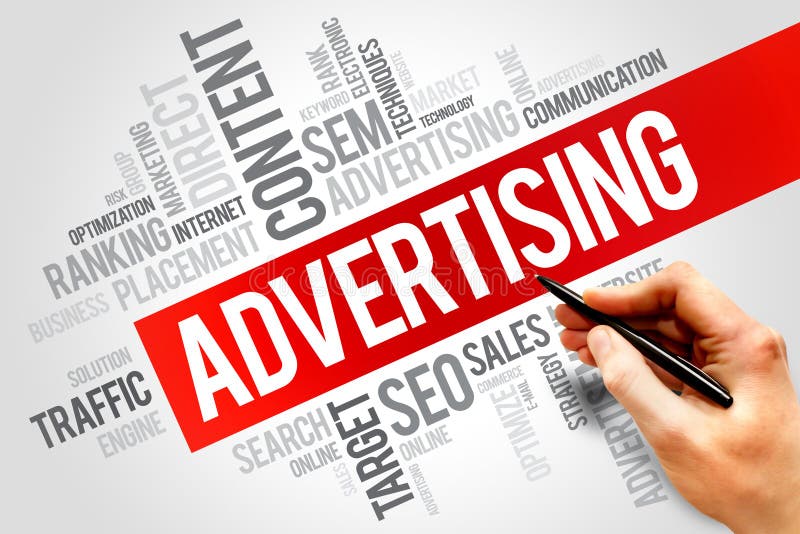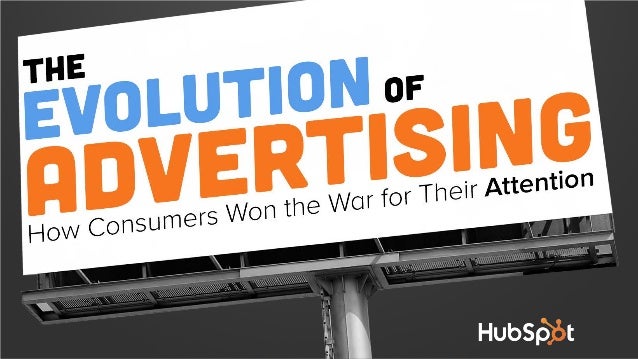Pioneering advertising is the launch campaign of a new product category, in opposition to the marketing of a single product in an advanced marketplace. The objective of pioneering advertising is to inform consumers of the arrival of an entirely new concept and explain its advantages.

What Is Pioneering Advertising?
Pioneering advertising is a promotion used in marketing new products, aimed primarily at customer education and includes costly and ongoing marketing campaigns.
The advertising campaign and promotional strategies that the product should follow depends on the stage you are in the product life cycle. For example, a sensible form of advertising for a mature product would be to offer discounts and benefits. For a product in its first stage, it would be wise to give consumers a product test to introduce them to the product.
![]() Example
Example
Examples of pioneering advertising would be mobile advertising features with the launch of a new phone model in the market with new features; Philips’ advertising of Kerashine’s new hair product falls under the Pioneer advertising category.
Product Advertising
The Product Life Cycle (PLC) platform where the product is present usually determines the type of advertising used by advertisers. The types of product advertising that merchants can choose from are:
![]() Pioneering Advertising
Pioneering Advertising
This advertising approach is designed to promote the primary demand for a new product or category. It is widely used in the introduction phase of a product life cycle when a new product is introduced.
This type of product advertising provides in-depth information on the benefits of using the product or service. It is often used to create interest and increase public awareness.
![]() Competitive Advertising
Competitive Advertising
The purpose of using competitive advertising is to influence the demand for a particular product. Advertisers often provide information about a product features and benefits that may not be available in competing products. Even though some products have similar characteristics or benefits, advertisers often create the impression that in some ways, their products are 'better than other similar products available in the market.
![]() Comparative Advertising
Comparative Advertising
Comparative advertising compares two or more competing brands with one or more features, either directly or indirectly. Comparative advertising gives consumers the right decision when most of them do not want to make decisions. In this way, by comparing one brand of a company with other competing products in an ad, the company may help consumers choose the type of product they would like to use.
Advertising Stages
![]() The Pioneering Stage
The Pioneering Stage
At this stage, the advertising used by the company that produces the new product aims to invite its marketing audience. Therefore, advertising is based on the distinguishing features of the product and the price. Thus, this is known as pioneer advertising.
![]() The Competitive Stage
The Competitive Stage
Even after prospective buyers want to buy and use the advertised product, they are confused about the product brand.
The purpose of advertising in the competitive category is to show how a particular brand product compared to other products will better satisfy consumers.
![]() The Retention Stage
The Retention Stage
The third stage of advertising through which the product passes is the retention stage. When the public knows the product advertised but uses it regularly, it becomes the company’s responsibility that manufactures the product by making a repetition or reminder.
Purpose of a pioneering advertising
A pioneering advertising campaign aims to introduce potential customers to new ideas and create buzz around the launch of a unique new product on the market. A well-designed advertising campaign seeks to assure consumers that their lives will be improved by purchasing a new product. Advertisers who create a new product category do not have to focus on how their product is compared to the competition to focus on how their new concept works and its means to the consumer.
What Are the Two Functions of Advertising?
Whether your distribution platform is TV, Internet, print or radio, advertising work is based on the principles of supply and demand. The purpose of creating a specific need for your products and services is the first part of the advertising campaign; the second half retains its momentum. Keeping your finger on your market demands is as important as paying attention to what your competitors are doing to get their attention.
![]() Customer Integrity
Customer Integrity
A one-time advertisement can attract customers to a new business but is often not enough to encourage loyalty and increase the popularity of the product. Once the first marketing task is completed, the second stage is to strengthen the product presence in the minds of consumers constantly. This is achieved by announcing private sales, rewarding loyal customers with discounts and providing a list of questions to measure their satisfaction and asking for their advice on new products and services they would like to see offered.
![]() Expanded Distribution
Expanded Distribution
To stay active, business owners need to stay informed about industry trends, update their image as needed, and expand their products or services through new channels. This means creating more media availability and tapping new customer resources. Additionally, websites as a 24/7 promotional site allow for global access without increasing advertising costs.
Pioneer in the development of Advertising Frank
Pioneering advertising is such an advertising campaign in which the consumer is first introduced to the product, informed of the benefits to encourage the continued purchase of the product.
Among the authors of the first books in advertisements, we find authors, advertising managers, book editors, psychology associate teachers, and school textbook, writers. Each of them made valuable contributions and received help from others. Before 1895, a diligent effort was devoted to an in-depth study of problems or advertising goals. At the same time, talented men and many students actively participated in the development of scientific and practical advertising programs. They write books and articles to inform their results. By 1910, a remarkable field of facts and declarations had been discovered and classified.

Publishing records show that fewer than ten advertising style books were printed in the last 50 years. Four books were written between 1895 and 1900. Over the next ten years, at least 75 advertising volumes were published, and these books were especially rich in original ideas. This article aims to summarize and analyze the contributions of some of the great pioneers of advertising literature. Only books written before 1910 have been considered. Suppose any of the original volumes containing the first significant work have been completed. These pioneering advertising writers fall into three different categories: advertising, psychologists, and book writers.
Copywriters and patrons first wrote down the terms that were developed and validated accordingly. An academic psychologist has provided the use of an objective approach. Marketing professionals and psychologists combine their efforts to make advertising more scientifically sound. Meanwhile, textbook teachers did an essential job of integrating and classifying adequate marketing information.
Advertising Users
The first modern advertising books contained comments on regular business letters and interviews in newspapers. One reference was made to Edwin T.Freeedley’s book Practical Treatise on Business, published in 1852. A recent letter by the same author (Common Sense in Business, 1878) urged the advertiser to consider the quality of media coverage and Talk to an advertising agency. Between 1865 and 1870, George P. Rowell, the first agent to develop many advertising reforms, published the Advertiser’s Gazette.
Institutional Advertising
Institutional advertising focuses on gaining the benefits, ideas, or philosophies of your business or the entire industry to promote or improve its reputation rather than sell a product or service. As the institution’s advertising tries to create a positive image, it has a lot to do with public relations.
Market Share Pioneering Advantage
The pioneer has come in, attractively raised money, and in his tenure has reduced his production costs as a result of some form of apprenticeship. Some days later, a new person comes in. His production costs are higher than those of one person at a time. However, due to the distribution of information, the price of these two firms is equal to a particular day in the future.
As soon as a new company enters the market, the duopolistic game begins when firms select prices and investment prices. Analyzing the game, we find situations where stocks in the final market no longer depend on the entry order, initial cost of profit, length of independence, or the length of time it has taken a newcomer to win a pioneer profit.
Profit and loss of the market pioneer strategy
When managing a business, you face many decisions every day. Some decisions are common, and some may be important to the survival of your business. Choosing the right strategy is one of the most important decisions you have to make as a manager, and you should make sure that it is done in the right way. You have many different strategies to choose from, but when it comes to innovation, you can select to pioneer rather than pursue a career. If you are in a challenge, do not be afraid to take risks and find joy in being the first one, then the pioneers’ strategy in the market is the right choice for you.
Once you have decided to be a pioneer, you should continue developing your strategy and choose whether you want to focus on building a new product or service, a new process, or a new market. The first two are considered to be pioneers in technology and are a good source of growth. Whatever option you choose for your new system, know that it is usually a differentiation strategy that follows the pioneering approach, and the fans prefer a lower-cost strategy.

In addition to gaining a pioneer’s reputation, you control new technologies and distribution channels that lead to lower overall costs. You also have the opportunity to build relationships that strengthen trust with your customers and, in many cases, have the largest share in the market. Pioneering may open the door to other privileges of service and may even provide you with some protection. Higher profits are often linked to higher obstacles that you can pioneer. Obstacles can be a way to control resources, technology, human construction and more. The factory-based vision is to allow you to exploit important, scarce and difficult to emulate resources.
Being a solid designer and pioneer also brings with it the initial challenges of shipping. It can create a free travel effect and give your fans free use of your success/design/knowledge/expertise. This will make it easier for them to create their new products and make you superior, affordable and attractive to your customers. You must continue to work for improvement and make sure you have the latest information on the needs and requirements of your customers. Sometimes it’s best to open your mind to emerging technologies that may be competing for you instead of just focusing on and blindly seeing your new beginnings. That is the only way to ensure that you will not be blind-sided and banished from the market/game.
Being a pioneer requires the true spirit of the composer, and not many are ready for the challenge. The uncertainty of your developing and later adopted concept is high and comes with significant risks along the way.
Note: Give yourself the benefit of the doubt and start your creative journey into an unfamiliar place. We support the best ideas and make sure we provide your business with all the help you need in your new process and in your quest to be number one.
Frequently Asked Questions
Following is mentioned some frequently asked questions related to Pioneering Advertising, which are answered briefly.
1. What is the objective of a pioneering ad?
The primary purpose of a pioneering advertisement is to inform the target market. These messages aim to entice the targeted market to choose a company brand over its competitor.
2. Is advertising good or bad?
Advertising can be harmful. But it can also be beneficial to the community. Advertising is an effective and powerful way to spread the word about important issues and products, such as AIDS awareness, diabetes monitors, the risks of tobacco and alcohol, and other health-related concerns.
3. Is competitive advertising illegal?
Comparative advertising is legal if it is true and not false or deceptive. Suppose a competitor makes false or misleading advertising claims that affect your business, various legal claims and remedies.
4. Can you mention competitors in ads?
It is perfectly acceptable and within the scope of the law to use someone else’s trademark in advertising, as long as specific standards are met. The ad must be authentic, and the use of another person’s brand should not give a false impression of affiliation, endorsement or sponsorship by the owner of another trademark.
5. Is advertising essential?
It plays an essential role for both manufacturers and consumers. Advertising is vital for the whole business as it allows the business to gain more customers, thus increasing business transformation. Typically, companies hire advertising agency services to promote their products and services.
6. Are advertisements evil?
Advertising is neither evil nor useless, but it is out of control. We must create space for our inner motives to be revealed and confirmed. We need to take care of and celebrate what is good about culture: not strive to strengthen our already existing role as consumers.
7. Is advertising more harmful than helpful?
Yes, because many ads do more than advertise products. Many young people are self-conscious and lead unhealthy lifestyles because they see fit to be thin and attractive like the models they see in advertisements. This leads to severe problems such as eating disorders and self-harm.
8. Why should advertisements not be banned?
It is said that ads can help improve products. However, advertising should be banned on radio or television because it has an impact on the community. Imagine if there are no ads on radio or television globally, we cannot get details of new products at once.
9. Why are ads annoying?
Some of the top reasons why ads can be seen as annoying are the frequency of ads, the placement of web pages, the lack of value and the wrong targeting, and the size of the ads. The constant increase in online ads from our favourite websites and social networks is undoubtedly a complaint about online users.
10. What is puffery advertising?
Puffery advertising is defined as advertising or promotional material that makes comprehensive or exaggerated statements about a product or service that are subjective rather than objective. No rational person can imagine being realistic.
Conclusion
This article is about pioneering advertising. According to the definition of pioneering advertising, it is the launch campaign of a new product in the market. This article has mentioned the crucial aspects of pioneering advertising, i.e., product advertising, institutional advertising, stages of advertising, advantages of advertising, and profit and loss of market pioneer strategy.
Related Articles
Business With E-Liquid Packaging
Podcasts Advertising
Does Social Media Advertising Really Increase Your Profits?
Banner Marketing
10 Ways to Use Free Advertising for Business Marketing
